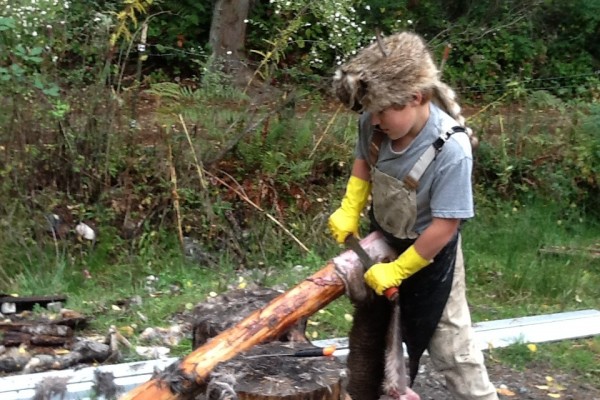
In the Native American days, nothing was ever wasted. Everything had a second use, and this counted especially toward hunting. But in this modern day and age, we go to Walmart and buy whatever cut of the animal we require, while the butcher tosses out everything ‘extra’. What most people don’t know is that while the methods of the Native Americans may seem outdated, their effectiveness has not been lost to time. Of course, things like ‘bone tools’ don’t really apply to our lives anymore, but it could be an interesting experiment nonetheless. Lots of people even attest that they work just as well as any other kind of tools.
Apart from the meat, the skin is by far the most valuable part of the animal- that’s pretty common knowledge. But for those of you who aren’t familiar with the process, let me give you a few tips. Anything with fur can be skinned, tanned, and made into something of use. Livestock or large game hides can be made into bags, blankets, rugs, and even clothing, but the process can be a bit labor intensive. On the other hand, small animals, such as squirrels, have very delicate skin and are best used for decoration or for being made into pouches or toys.
If hides aren’t your thing, you can remove the fur completely and make leather (I hear deerskin leather, when treated properly, is particularly soft). Rawhide is perfect for laces, straps, and, of course, drum heads. While this may make a few of you Prepper Joes squeamish, you can even make a pouch out of a male animal’s scrotum. As you can see, we take this reusing business very seriously.
Offal
This includes entrails and organ meat. When it comes to organ meat, you either love it or hate it; and whether or not you enjoy eating it will determine its value. If organs aren’t your cup of tea, they can be mixed into compost or pet food. If you don’t have any pets, you can simply toss them back into the woods and pat yourself on the back for providing a local scavenger with a meal.
Now if you do happen to be an organ meat connoisseur, the most important thing is to first check with the local wildlife department and find out about any illnesses or parasites in the area. When in doubt, better safe than sorry. If you make your inquiries and don’t find any cause for worry, pancreas, liver, and kidney are all considered delicacies in certain areas.
Intestines serve wonderfully as sausage skins when thoroughly cleaned, or as cord when twisted and dried. Stomach and bladder are sometimes used for water storage, again, when cleaned properly.
Bones and Antlers
Bones are incredibly versatile, which makes it unfortunate that they are usually the biggest part of the carcass to be thrown away. Any animal bones can serve excellently as soup stock, and marrow can even be harvested and used in food. Both of these may require some trial and error, depending on what your preferences are.
Knives, needles, awls, knapping tools, fishhooks, arrowheads, buttons, flutes, and jewelry can all be made out of bones. While antlers are very similar in nature and can sometimes be used for the same projects, some bones are much stronger, and so which to use is a call you’d have to make based on your situation. If you don’t have an interest in any of the experiments listed above, bones and antlers can be ground up as bone meal and composted, providing your garden with an extra nutrient boost. They could also be given, whole and uncooked, as a gift to man’s best friend.
Other reusable animal parts include:
Head/skull/teeth – While the head itself can be cleaned and skinned to make stew stock or soup, you can easily trade the skull if you don’t want to keep it around. The brain is useful for tanning hides, and the tongue is edible. Lastly, teeth can be ground up as homemade sandpaper or used whole to create buttons or jewelry.
Hooves – Hooves are difficult, but can be made into oil, gelatin, or glue.
Feathers – Down can be collected for clothing and bedding, or used as fishing lure or any other craft project. Feathers are generally difficult to use as a hide, so any of the ideas above would be preferable options.
Sinew/Tendons – This is perfect as cordage for sewing and lacing. As it can be naturally absorbed into the body, sinew can be used for sutures when sterilized properly.
Fat – Animal fat will serve as a machine lubricant or as fuel for a torch. Obviously it will also add calories to any meal, proving advantageous for survival.
Blood – If blood pudding or soup isn’t your thing, scatter the leftover blood throughout your garden as a fertilizer.
Urine – Use urine to assist in the leathermaking process by removing hair. If the game is female, the urine could be saved and used as a lure.

